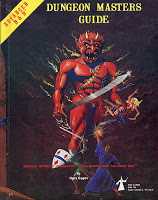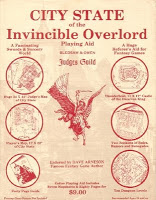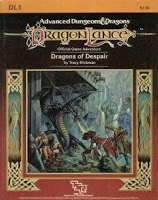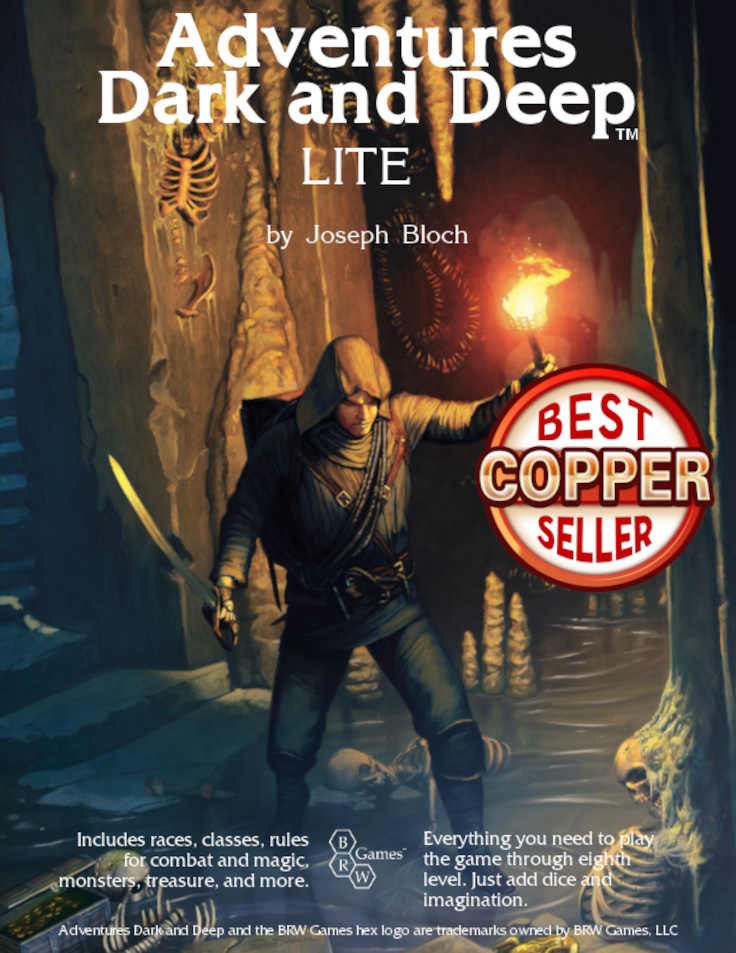One of the things that strikes me from the accounts of the earliest days of Gary Gygax’s campaign in Lake Geneva was the lack of a single group of players that would consistently come together to play. There was no “the party”*. Rather, there was a cloud of players, of which a subset would get together on any given day to play.
That’s very different from the way the game was played from about 1980 onwards (perhaps a little earlier or later, depending on the locale and how thoroughly D&D had infiltrated the consciousness of the local kids). There was one Party per campaign world, and the same people would get together consistently to play. Obviously there were (and are) exceptions, but as a rule Party play became the rule. I think this had several impacts on the way the game was played.
First, it allows play to be suspended in situ, and picked up again exactly where it left off. The impact of this is enormous; no longer was it necessary for the cohors pro tempore to return to their base at the end of every game session after exploring the campaign’s tentpole dungeon or some peripheral adventuring arena. It allowed for more wide-ranging play, where exploration was possible beyond “a reasonable distance” from a central city or town.
We see the difference beginning to emerge early on, with the reports of the way that the Greyhawk campaign never seemed to move too far beyond the City of Greyhawk and its attendant ruins (with exceptions, such as the well-known trips to “China”, which were handled one-on-one as far as I can tell, or to places such as Stoink, which could be reached from Greyhawk with not too much effort), as compared to early settings like Judges Guild’s City State campaign (aka the Wilderlands of High Fantasy), which notably didn’t have any real tentpole adventuring locales.
This also impacts entire sections of advice given to fledgling DMs in the Dungeon Master’s Guide. When the party is always together (or reasonably so), sections such as “Time in the Campaign”, which implores the DM to take good account of time passed for each character become rather superfluous. Naturally, if the players are all part of “the party”, then A’s fellows will wait around for him, or, better yet, accompany him and his elfin henchman to visit that oracle.
Second, the switch from cloud to party allows the DM to focus more on a single coherent storyline. When one cannot be sure that a given character is going to be playing from one week to the next, it becomes very difficult to build sweeping story arcs around his quest to regain his throne as the prince of the elven lands, usurped by his evil cousin. You can’t have a Dragonlance epic without a constant stable of characters to engage in the plot; a cloud just won’t cut it.**
The reasons for the switch are manifold. Probably the most important practical consideration is that back when the game was first becoming widespread, it spread among individuals, who brought in their immediate circle of friends to play. Only the most hard-core gamers would cross-pollinate between groups (except at conventions and the like), so truly large groups of players where everybody wasn’t free at the same time just didn’t exist. Or, if they did exist, it was impractical for DMs of the day to run a game for a group of 20 players, even with a caller.
As noted above, there are modern-day exceptions. The famous West Marches campaign springs to mind immediately, and of course Constantcon is an ongoing ad hoc cloud, for all intents and purposes. My own current Greyhawk campaign is consciously designed to use the cloud style of organization; we’ve got a number of regular players, but only a maximum of 6 can show up for any given game (that’s a limit I imposed, as I find it the optimal number for myself to run a game for, as the GM). But I think that the shift from the cloud to the party is one that not only impacted the individual campaigns that utilized one approach or the other, but D&D as a whole, because it encouraged the style of play, and thus the design of adventures and even entire settings, that have come to dominate the hobby and industry today.
__________
* Indeed, there wasn’t even “the campaign” in the earliest days, but rather a number of different campaign worlds that players would bounce between willy-nilly, but that’s somewhat beyond the scope of the point I’m making here.
** Which is not to say that there aren’t plots in a cloud game, but they
tend to unfold on a personal level, rather than a group level.














I think a transition from "cloud" to "party" was inevitable given the core nature of D&D; the ability to house-rule D&D.
It is harder to have a "cloud" when the rules themselves can vary from table to table. Sure the "cloud" at Gary's table worked because there was one rule set, his. As the game spread away from his table, the rules changed as well and people began to play at the tables that reflected their own viewpoints on D&D style. It became a "party" game.
The more house-ruling entered a table the more difficult it was to play in a "cloud". Table rules created "party" play.
I'm not so certain I agree, Callin. take, for instance, this. Plus don't forget that even in the early days of Lake Geneva, the rules might vary from, say, Greyhawk to Maure Castle to Demonland. Same broad group of players, but different house-rules. You see the same thing in Constantcon, with some interesting ways to get around the phenomenon.
Actually, though a lot of what you say is true, I tend to think that the shift towards party rather than cloud is symptomatic rather than anything else, of a general shift in how the game is being viewed by newer incoming players. It's been my general observation that the "modern" crowd of gamers are looking for "plot" in their campaigns, that they want a story with beginning, middle, and end, and that just doesn't work well with the cloud model. The idea that a plotline can exist, but isn't really something that's planned out across all sessions is somewhat alien to a lot of the new school gamers I converse with, and their impression of the old school is that it's just "you arrive at the dungeon entrance, what do you do now?"
It's kind of strange, actually, in that it's a realization that, though we're all playing, for the most part, the same game or same type of game, that we're litarally speaking different languages about and within it. D&D changed in order to emulate what the crowd was seeking: story, plot, cinematics. The idea of vagabond adventurers out to seek their fortune by robbing from tombs or whatever is something that they simply do not understand. They want to emulate the type of things they've seen in the latest movies or television shows instead. And, admittedly, AD&D isn't quite conducive to that like 3.x or 4.x is.
@Hamlet: Ah, but a classic hex crawl (like the old Judges Guild products) also is geared more towards a party rather than a cloud, because there's no "home base" for the cloud to be able to swap out members. No mega plot lines there. And those have been around almost as long as the game itself.
"Second, the switch from cloud to party allows the DM to focus more on a single coherent storyline. When one cannot be sure that a given character is going to be playing from one week to the next, it becomes very difficult to build sweeping story arcs around his quest to regain his throne as the prince of the elven lands, usurped by his evil cousin. You can't have a Dragonlance epic without a constant stable of characters to engage in the plot; a cloud just won't cut it."
All the more reason to love the cloud.
A DM focusing on a single coherant storyline? For shame! Does no one believe in multitasking anymore?
I think the "party" came first. Gygax had his core players from the start before the "clouds" rolled in. They're both a part of the same cycle.
I had a cloud of parties meeting up every other week for a year at university. Sure, there were core players who showed up every time, but it didn't push anyone else to the B-storyline. There were always ways to pull in story hooks from whatever the players told me about their characters' pasts, adventures, etc.
Back in the day, DMs were dealing with players exposed to pulp sci-fi/fantasy, budding groups of anime fanclubs, whatever the lastest, greatest exciting thing was. It's hardly new; it may be more common, but not totally new.
Party as the Clouds roll in, and then Party some more. Take'em all by storm!
I've spent most of my gaming career in party-mode, but my current campaign (Castle of the Mad Arch-mage, actually) is very firmly in cloud-mode.
The party has a home-base outside the dungeon (that we haven't really detailed) that they return to at the end of every session. I use the OSRIC rules for training times and recovery time after going below 0 hp, so most of my players have multiple characters in order to stay in the action.
I think it's like the difference between episodal TV shows and arc-based TV shows. Both have their strong points.
Great post Joseph. I've never seen the distinction and it's possible effects discussed before and I think that it is a real difference. I do also agree with YGGS comments.
Did any of those earlier cloud campaigns use more than one DM? If so, how did that work?